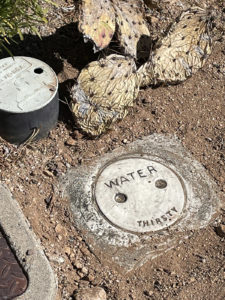The Rillito River Project
In January, 2007, an international group of artists, architects, musicians, writers, builders, and anthropologists gathered in the dry Rillito riverbed to explore, discuss, learn, and collectively interpret through creative expression the whispered prose of the dry riverbed.
The project is envisioned as a series of ongoing events in which artists conceive and plan artwork to be installed or performed in the riverbed. The work is documented with photography, video and prose.
New Project
No Water Installation
On February 15, 2022, Tucson artist Ellen Benjoya Skotheim and New York artist Anthony Peter Gorny created and installed a neon sign bearing the words “NO WATER” in the bed of the dry Rillito River in Tucson, Arizona. This installation is intended to draw much needed public attention to the ongoing Mega Drought, the longest and most severe drought in the western United States and Northern Mexico in at least 1200 years. A study published in the journal “Nature Climate Change” concluded that human-caused climate change significantly contributes to the Mega Drought.
Read more about the installation or
Download the NO WATER image
Bats – Highly Acclaimed
Part of University of Arizona’s Dance Spring Eternal in 2023
Dedicated to Bat and Mammal specialist Dr. Yar Petryszyn for sharing his knowledge about bats and their importance in our ecosystem. Also, Ellen Skotheim for her environmental work with Rillito River Project.

Ellen Benjoya Skotheim, artistic director of the Rillito River Project, with Barbea Williams, choreographer of Bats – Highly Acclaimed and the dancers from the University of Arizona School of Dance
“Bats” utilizes hybrid dance styles to plant seeds of insight into and shed stereotypes of hallow horror through visual narration. Using night predator and prey scenes that farmers and lay people alike respect due to the amount of insect consumption taking place nightly. Which provide humans with an organic pest control that protect crops and rid fellow mammals of undesirable pests. As they add beauty and sustenance to our world as pollinators of flowers, our beloved cacti and plants that feed and clothe the world’s populations. An Afro-Futuristic costume design chosen for the insects are to capture the intricacy of their attractiveness. This stylized dance brings an acute awareness of Bats function, hoping humans understand the global importance of our fellow mammals and their role in protecting and creating equilibrium in our planet’s ecosystems. Reciprocation seems like a natural order…
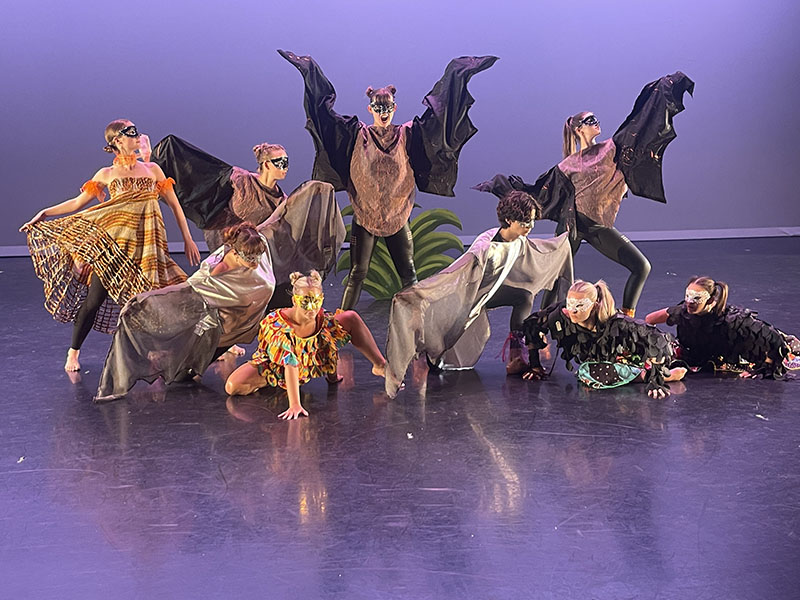
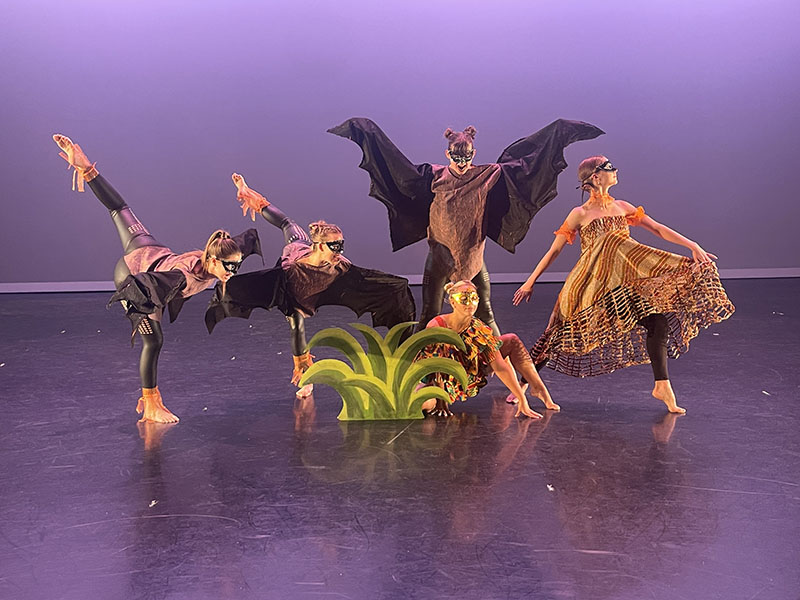
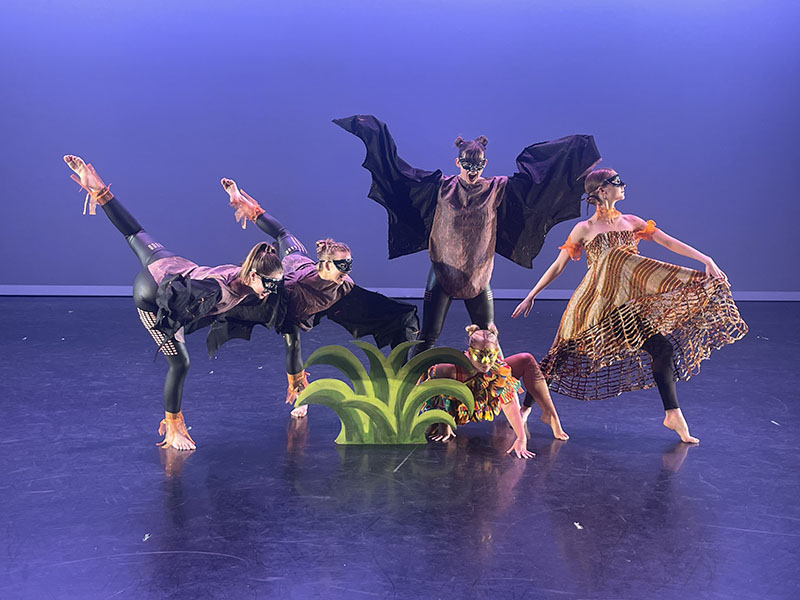
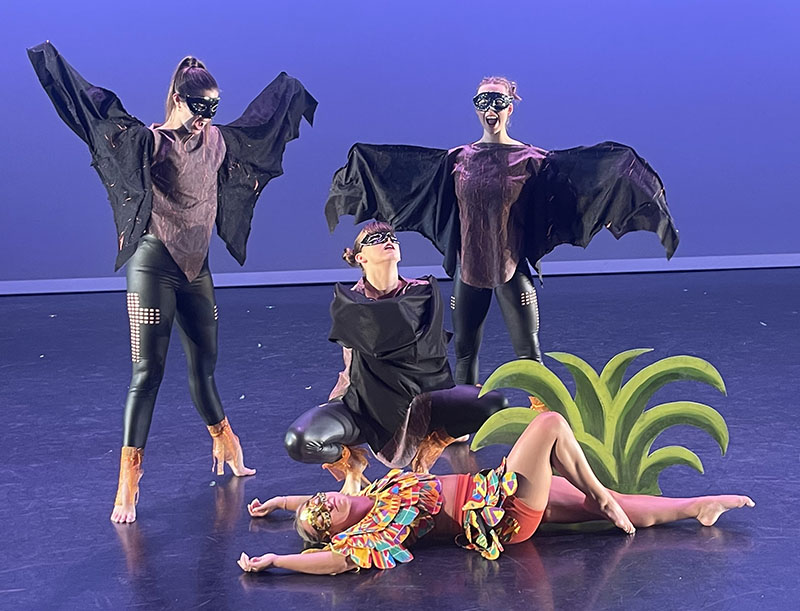
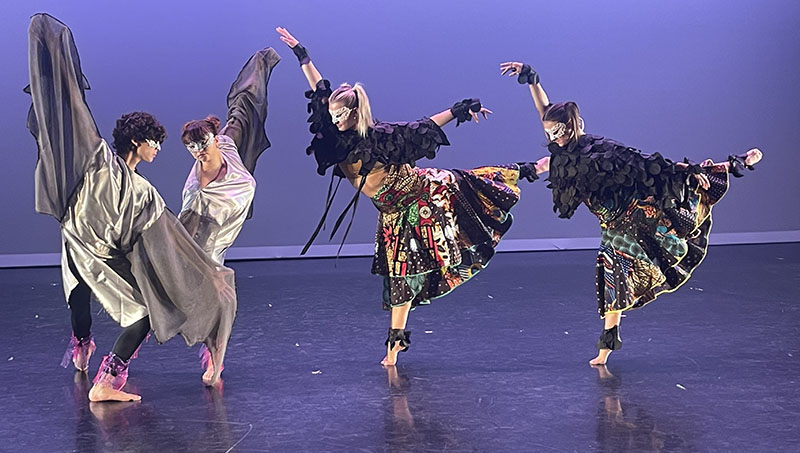
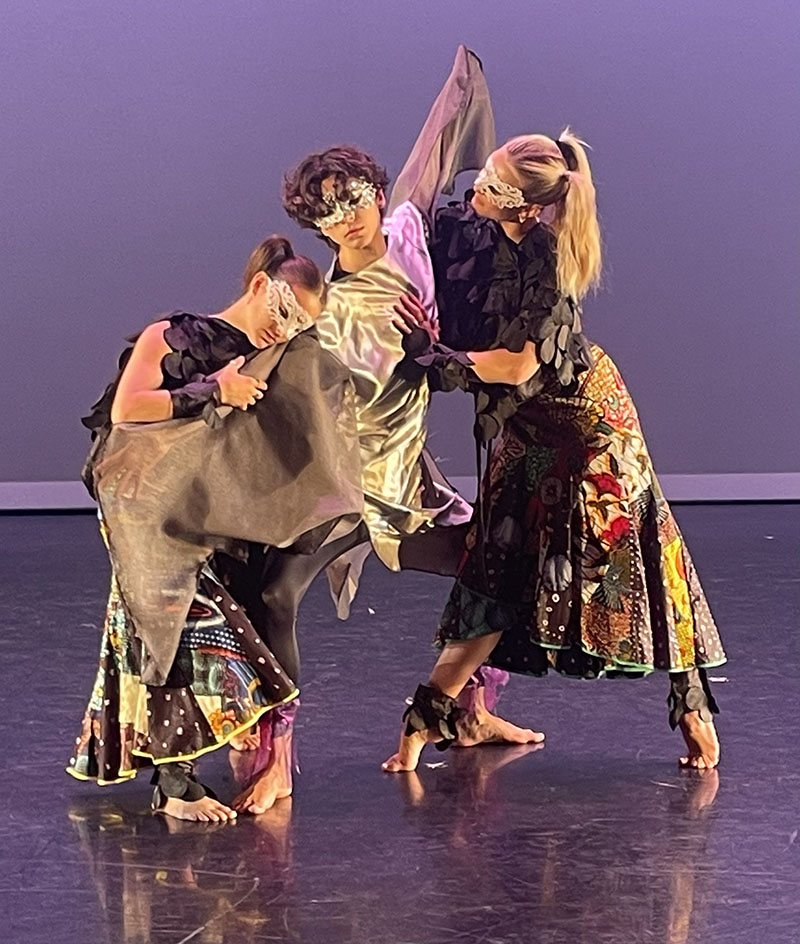
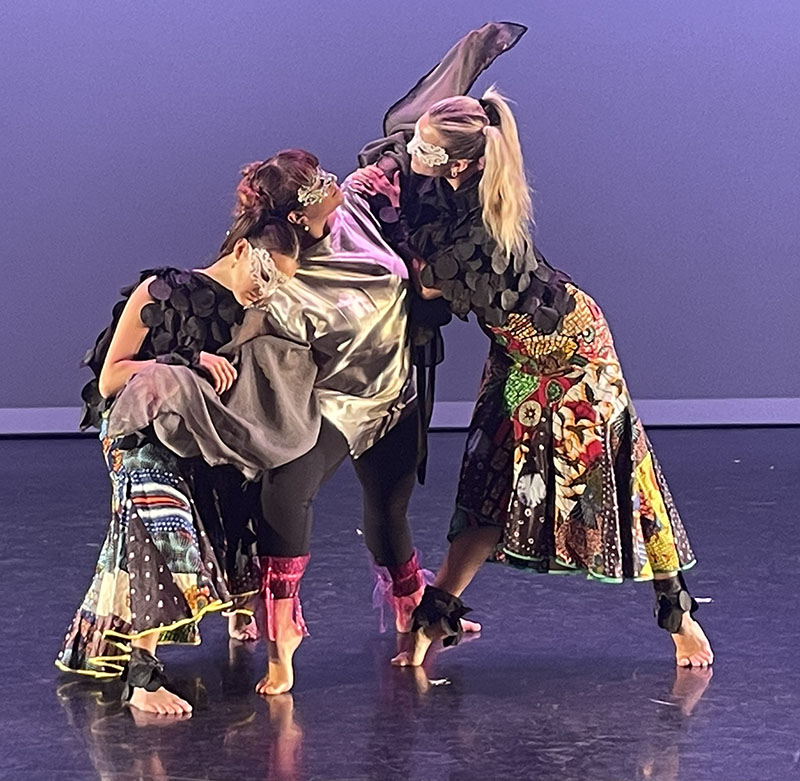
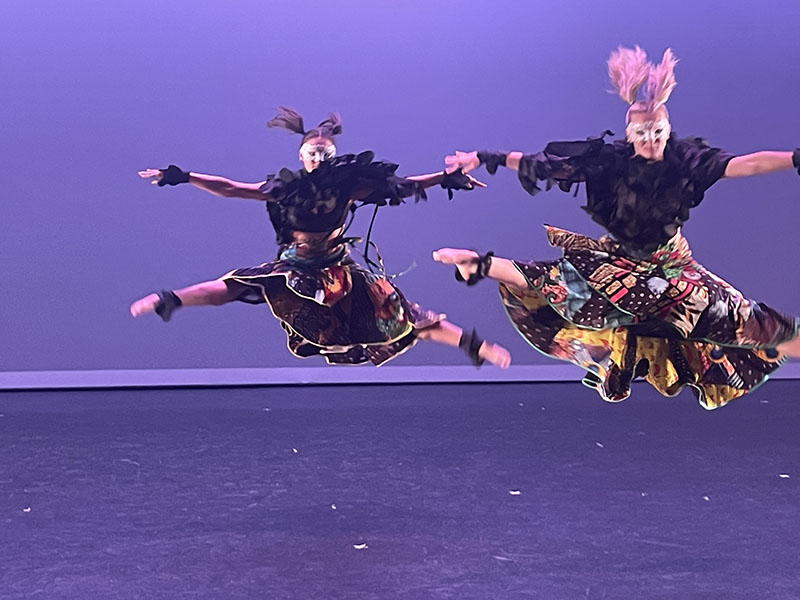
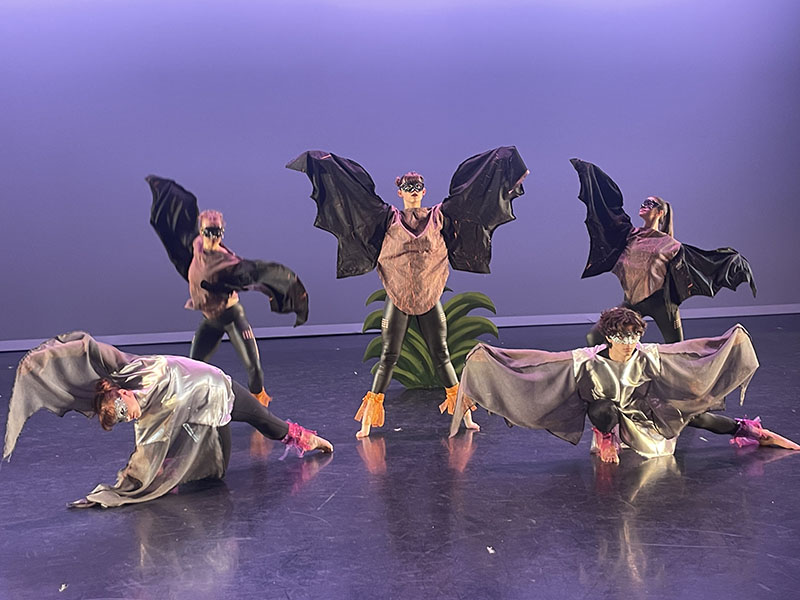
Choreography and Costume Design: Barbea Williams
Selected costume accessories were designed and constructed by Afrikan Designers.
Rehearsal Assistant: Casidy Chan
Music by: Damien Escobar
Music Editor: Skylar Sienna Fry
Costume Coordinator: Kristen Wheeler
Lighting and Sound Designer: Pearl Rea
Dancers: Juan Andreas Bautista, Sadie Beebe, Sophia Borgarello, Allison Burgess, Chloe Renee Canon, Casidy Chan, Abigail Emery, Grace Emery, Sydnie DeGraff, Skylar Sienna Fry, Carly Katz, Sasha Resist.
Special Thanks to the UA and BWPC Dancers for their amazing energy and creative contributions.
Ceramic Sculptures by Ellen Benjoya Skotheim
Ellen’s ceramic sculptures call attention to the coral bleaching and the changes in our marine ecosystems as a result of climate change.
The leading cause of coral bleaching is climate change. A warming planet means a warming ocean, and a change in water temperature—as little as 2 degrees Fahrenheit—can cause coral to drive out algae. Coral may bleach for other reasons, like extremely low tides, pollution, or too much sunlight.
Coral bleaching matters because once these corals die, reefs rarely come back. With few corals surviving, they struggle to reproduce, and entire reef ecosystems, on which people and wildlife depend, deteriorate.
Bleaching also matters because it’s not an isolated phenomenon. According to the National Oceanic and Atmospheric Association, between 2014 and 2017 around 75% of the world’s tropical coral reefs experienced heat-stress severe enough to trigger bleaching. For 30% of the world’s reefs, that heat-stress was enough to kill coral.
Source: World Wildlife Fund

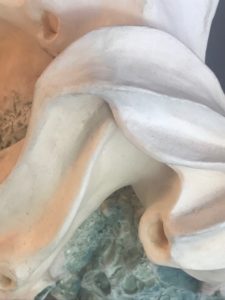
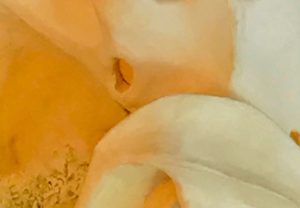
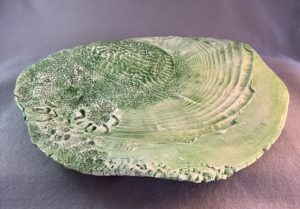
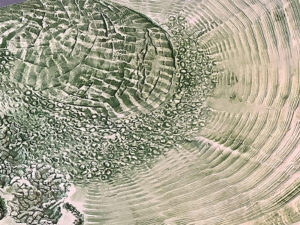

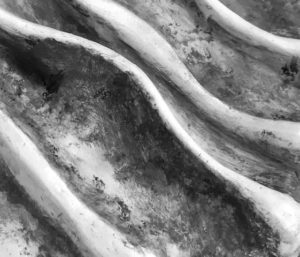

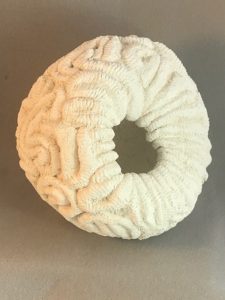
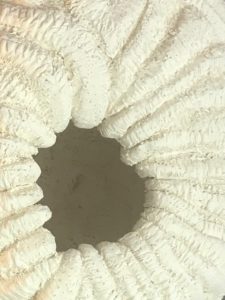
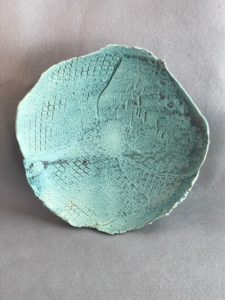
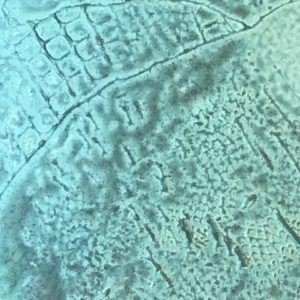
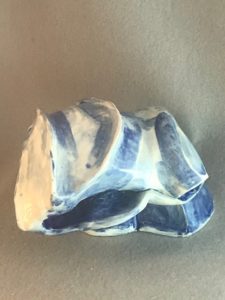
Bat Night
Bat Night is a yearly environmental performance art event produced by The Rillito River Project and held in Tucson Arizona under the Campbell Avenue bridge. This bridge spans the Rillito River, which once had water flowing in it most of the year. Human settlement over the last century has left the river dry, endangering many of the species that relied on the river for their water and habitat.
Elemental Flow
Following Elemental Flow are Patmore’s concert repertoire including La Fontaine d’Arethuse (The Fountain Arethusa) by the Polish composer Karol Szymanowski, the Sonata in E-flat Major for Violin and Piano of Richard Strauss, and the Sonata for Violin and Piano by the American composter Alan Seidler.
On October 20, 2007, Elemental Flow, the title track from Rillito River Project received its first performance in the Rillito riverbed before an audience of 150 invited guests.
The following video shows the unusual setup of the event accompanied by a portion of the Patmore Lewis composition.
The Rillito River Project, a 501C3, is funded entirely by private donations. A portion of the profits from the sale of Patmore Lewis’ Rillito River Project CD is returned to the Rillito River Project in Tucson, Arizona to fund future events.


